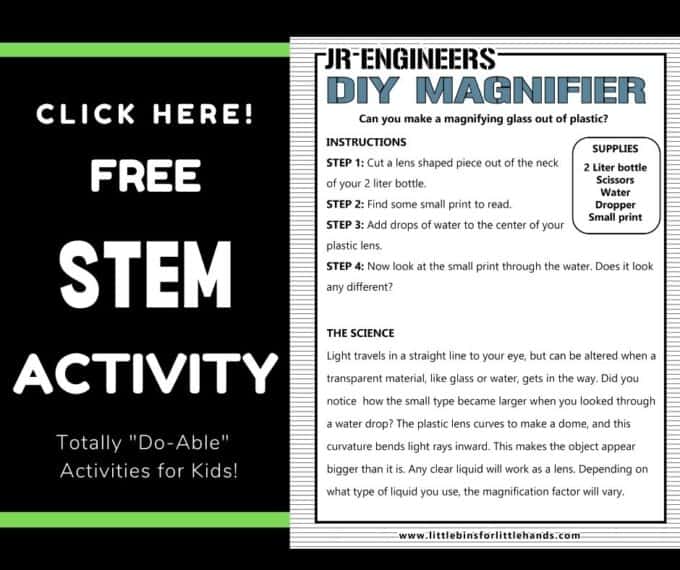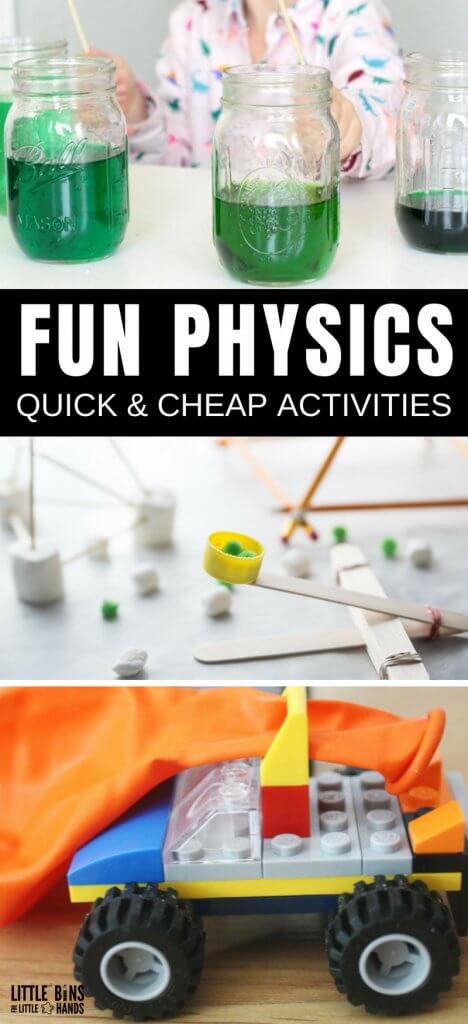Don’t have a traditional magnifying glass? Here’s how you can make your own homemade magnify glass at home or in the classroom. It also makes for a fun and simple physics activity for kids of all ages. All you need are a few simple supplies to get started. We love fun, hands-on STEM projects for kids!
HOW TO MAKE A MAGNIFYING GLASS

HOW DOES A MAGNIFIER WORK?
Magnifying glasses are great fun for making many different objects appear larger and have lots of real-world applications. We use them in microscopes, binoculars, telescopes, and even to help people with reading.
Without the ability to magnify objects, we wouldn’t know much about things we can’t see with the naked eye like bacteria and viruses, or far-away things, like stars and galaxies. Find out how a magnifying glass works thanks to some simple optical physics.
A magnifying glass is a convex lens. Convex means it is curved outwards. It is the opposite of concave or curved inwards. A lens is something that allows light rays to pass through it and bends the light as it does.
Light rays from the object enter the magnifying glass in straight lines but are bent or refracted by the convex lens so that they come together as they exist to create an image on your eye. This image appears to be larger than the object itself.
Now to make a homemade magnifying glass you need two things, a curved clear plastic lens (our piece cut from the bottle) and a drop of water. The curved plastic acts a holder for the water drop, which works like a magnifier.
Notice what happens to the small type when you look through the water drop on your homemade magnifier. The surface of the water drop curves to make a dome, and this curvature bends the light rays inward like a real magnifying glass. This makes the object appear bigger than it is.
Any clear liquid will work to refract the light. Depending on what type of liquid you use, the magnification factor will vary. Test out different clear liquids for a fun science experiment!

STEM FOR KIDS
So you might ask, what does STEM actually stand for? STEM is science, technology, engineering, and math. The most important thing you can take away from this, is that STEM is for everyone!
Yes, kids of all ages can work on STEM projects and enjoy STEM lessons. STEM activities are great for group work, too!
STEM is everywhere! Just look around. The simple fact that STEM surrounds us is why it’s so important for kids to be a part of, use, and understand STEM.
Interested in STEM plus ART? Check out all our STEAM Activities!
From the buildings you see in town, the bridges that connect places, the computers we use, the software programs that go with them, and the air we breathe, STEM is what makes it all possible.
Click here to get your free printable DIY magnifier project!
DIY MAGNIFYING GLASS
Can you make a magnifying glass out of plastic and water?
SUPPLIES:
- 2 Liter plastic bottle
- Scissors
- Water
- Dropper
- Small print
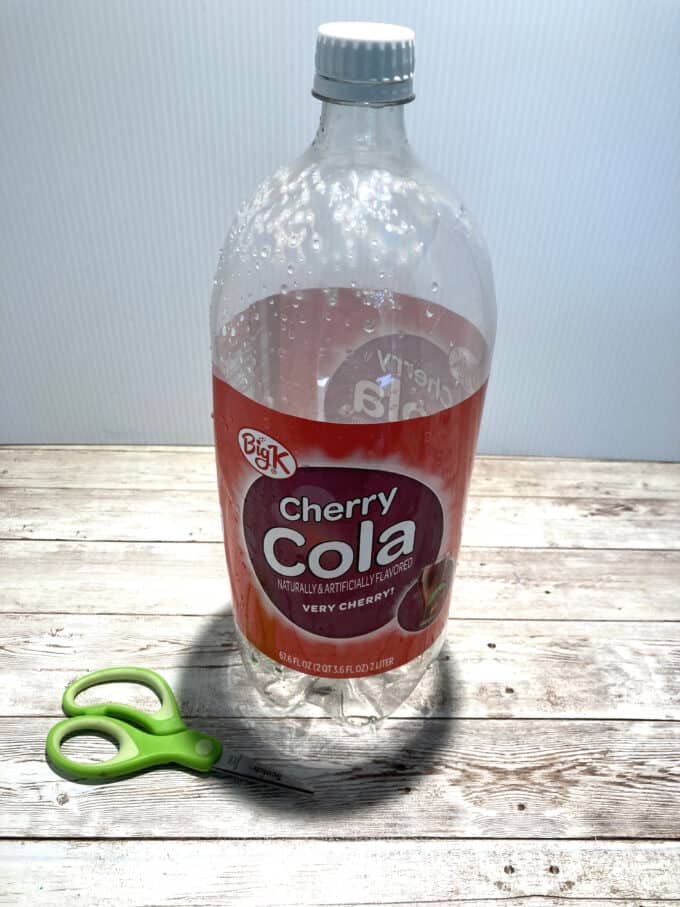
HOW TO MAKE A MAGNIFYING GLASS
STEP 1: Cut a lens shaped (this means it has curved sides) piece of plastic out of the neck of your 2 liter bottle.
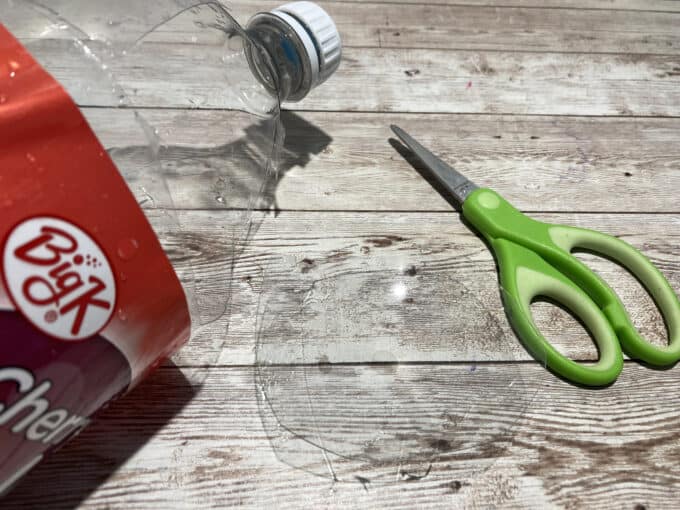

STEP 2: Find some small print to read.
STEP 3: Add drops of water to the center of your plastic lens.
STEP 4: Now look at the small print through the water. Does it look any different?
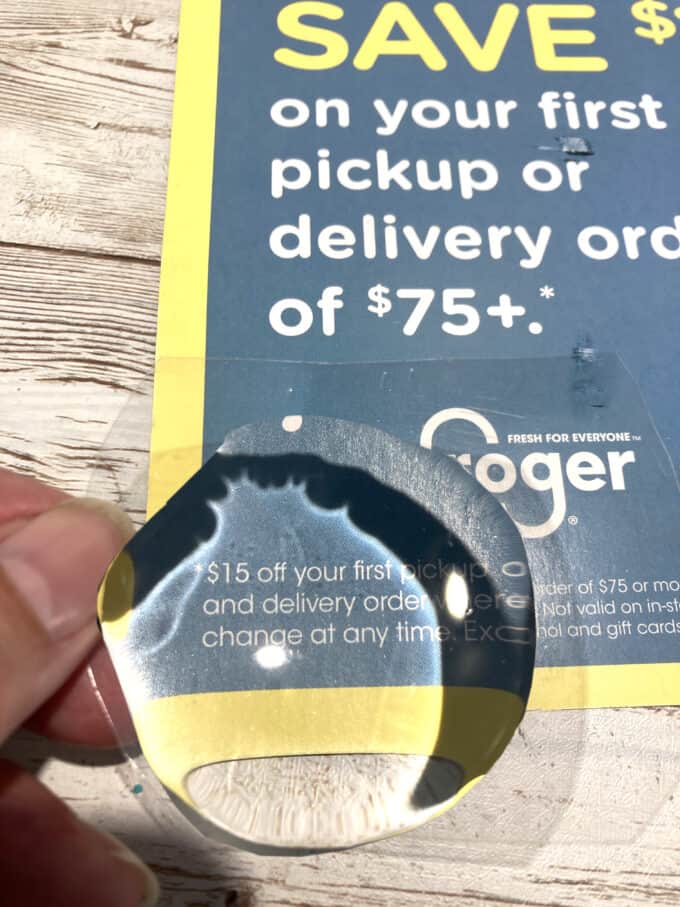
Extend the activity by changing the type of liquid you use on the plastic lens. What difference does it make?
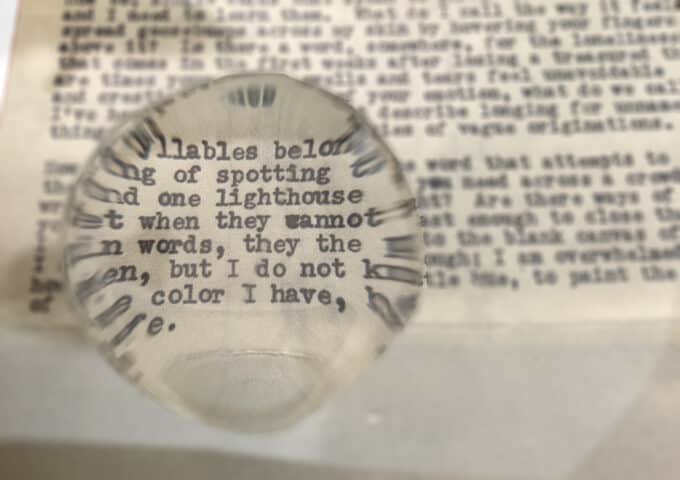
MORE FUN PHYSICS ACTIVITIES FOR KIDS
Learn about atmospheric pressure with this incredible can crusher experiment.
Make your own homemade air cannon and blast down dominoes and other similar items.
How many drops of water can you fit on a penny? Explore surface tension of water when you try this fun penny lab with the kids.
Explore light and refraction when you make rainbows using a variety of simple supplies.
Make a paper helicopter and explore motion in action.
MAKE YOUR OWN MAGNIFYING GLASS
Click on the image below or on the link for more fun physics activities for kids.


